Anthem
- Balanced Scorecard:
- Provides relevant data regarding financial outcomes of operations (Kaplan & Norton, 1992);
- Helps incorporate innovation into the daily tasks;
- Main Facts about Anthem:
- 1 in 8 Americans uses Anthem’s insurance (“Anthem 2017 annual report,” 2017);
- Innovation, such as telehealth or LiveHealth is the primary focus of the company;
- Revenue in 2017 is estimated at $90 billion (“Anthem 2017 annual report,” 2017);
- 60% of the reimbursement is connected to value-based programs.
A balanced scorecard is an approach to measuring a company’s performance over a specific time frame that helps executives define goals consistent with the current strategy. This is especially important in the healthcare industry where the challenging environment requires organizations to locate innovational models of service provision that cannot be evaluated using standard accounting methods. This presentation aims to introduce Anthem, review the company’s performance using the balanced scorecard approach, and offer four recommendations that will help this company achieve its targets.
The selected organization is Anthem, a nationwide health insurance company that provides a variety of services to consumers across the US. According to the 2017 performance report, the company’s insurance was purchased by 1 out of 8 citizens in the US (“Anthem 2017 annual report,” 2017). Thus, this organization serves as a health care organization to many Americans, and it is its responsibility to develop value-based care practices that will help improve the quality of medicine. One of the strategies that Anthem declares is applying innovation in its work to improve the approaches to treatment that are currently used (“Anthem 2017 annual report,” 2017). This is facilitated through the Blue Cross telehealth program. It can be argued that the current strategy of the company emphasizes innovation and value in medical services.
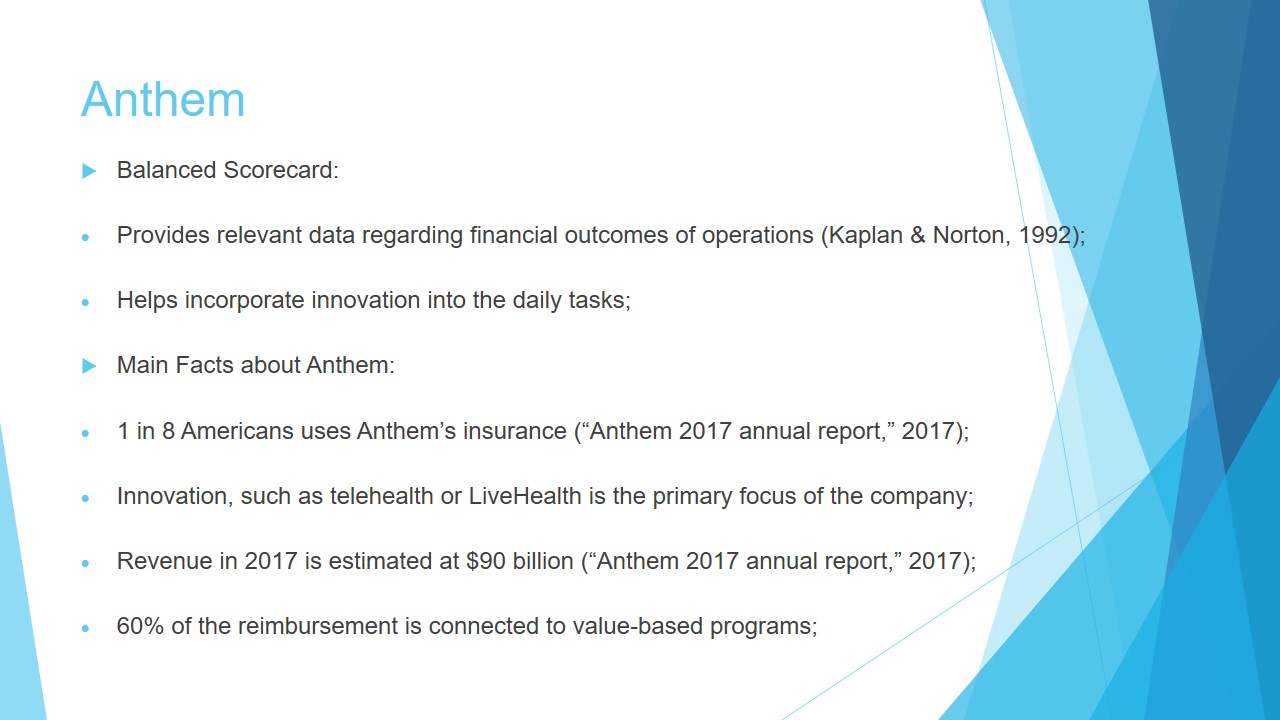
Balanced Scorecard – Financial Perspective
- Goals:
- Improve profitability;
- Increase revenue;
- Market share;
- Use new opportunities for capitalization (“Business strategy,” n.d.);
- Measures (and acceptable ranges for performance):
- The increase of margins (by 1-2%);
- Total sales and expenses (improvement by 10-20%);
- Percentage of Anthem’s presence in the insurance business (20-30%);
- Revenue (increase by 10-20%).
The first element of the balanced scorecard is financial performance. One of the issues that can be reviewed in this section is the shareholder’s opinion of the company based on its financials (Kaplan & Norton, 1992). In general, this perspective allows one to evaluate whether the existing plans contribute to the bottom line. One of the most important goals that Anthem has and that is reflected in its mission, vision, and values statement is a choice to develop innovational healthcare services and use them to improve the revenue of the company (“Business strategy,” n.d.). Other components include profitability, market share, and the number of sales.
Currently, the company experiences difficulties due to a decrease of its operating revenue, which was estimated at $8,843 million in 2018 for the commercial business sector that is an 11,6% decline when compared to the 2017 numbers (“Anthem reports fourth quarter,” n.d.). However, the overall operating revenue has increased due to the enhanced performance of government business sector. The operating margin in 2017 was 0,7% while in 2018 it was 3,6% that indicates a significant growth (“Anthem reports fourth quarter,” n.d.). Thus, the balanced scorecard analysis indicates that Anthem currently aims to improve its performance by using innovation that will help increase revenue and margins. Risk management issue, in this case, is the decrease in profitability due to a change in consumer preferences and low quality of care, which will require the company to pay more in reimbursements.
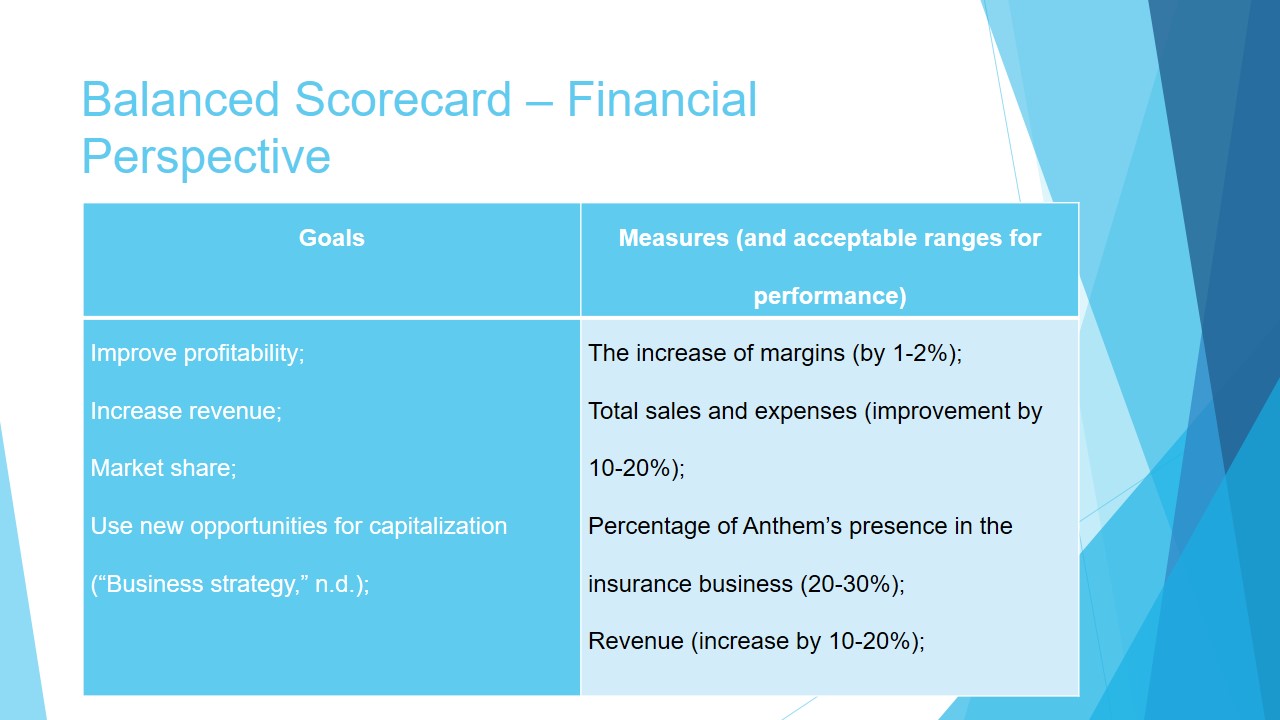
Balanced Scorecard – Customer Perspective
- Goals:
- Present new services that apply information technology to healthcare;
- Improve quality using value-based care;
- Simplify healthcare services;
- Measures (and acceptable ranges for performance):
- Number of clients using applications and signing up for new programs (50-80%);
- Patient satisfaction rate (88-99%);
- Number of patients receiving consultations through new models (50-70%).
The next perspective is customer experience, which is crucial for Anthem because the company emphasizes the need to shift towards value-based care. According to Kaplan and Norton (1992), this component allows examining a company from the viewpoint of its clients with “time, quality, performance and service, and cost” being crucial elements (para. 5). While Anthem is an insurance company that sells plans to its clients, the issue of services quality provided by its partners is a concern for the organization as well. The important aspect in this regard is the ability to increase accessibility of care and enhance outcomes of treatment for patients. This corresponds with the mission and vision of Anthem that focuses on “simplifying healthcare” (“Mission, vision, and values,” n.d.). Thus, the primary objective that is reflected in the balanced scorecard is to ensure that customers have good access to healthcare services.
Currently, Anthem works with 74 million individuals within the US, that use a variety of services, including Medicaid and Medicare plans (“Corporate fact sheet,” n.d.). This can be improved by simplifying access to care services through the application of information technology. Thus, Anthem’s balanced scorecard from the customer perspective involves improving the standards and approaches that are prevalent in the industry. The range of performance indicators for the customer perspective of the balanced scorecard is stated in the table.
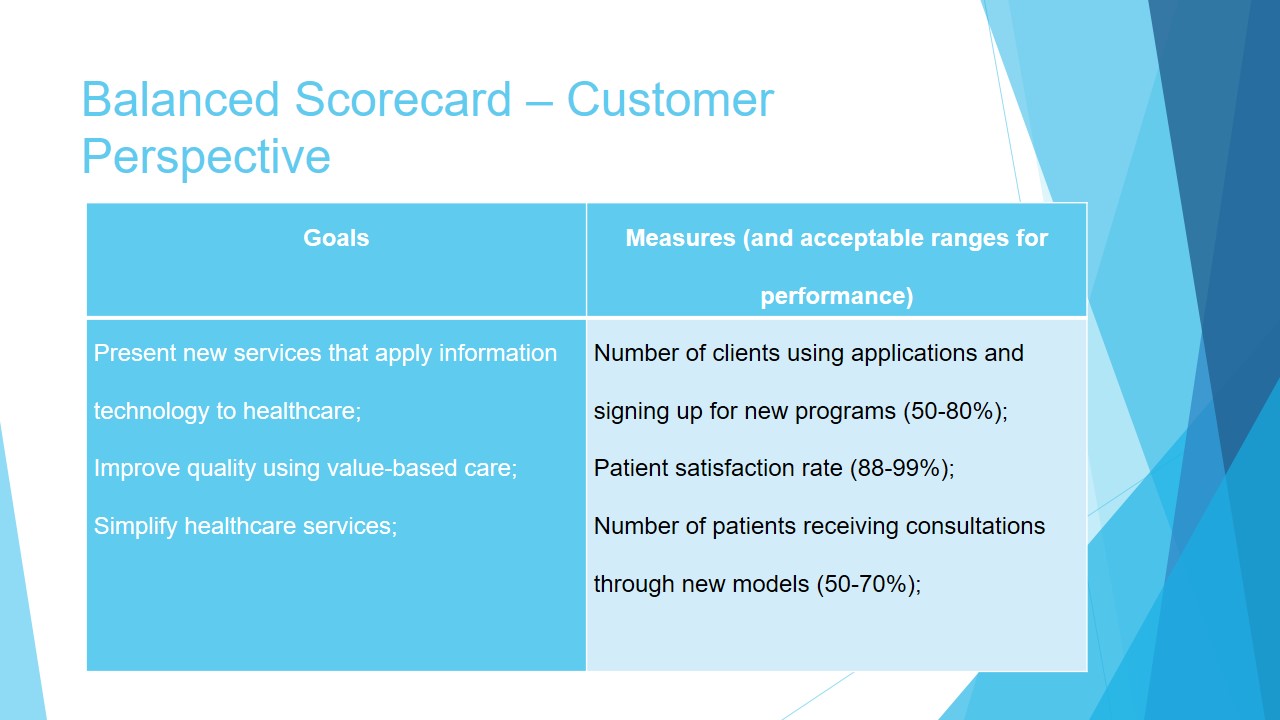
Balanced Scorecard – Innovation and Learning Perspective
- Goals:
- Become number one provider in telehealth;
- Focus on applications and webpages that allow patients to access providers;
- Measures (and acceptable ranges for performance):
- Number of patients that use telemethdicine from 20% to 50%;
- Number of individuals utilizing these models 40%-70%.
Training perspective is crucial for Anthem, based on its mission and strategy to apply innovation in healthcare. Moreover, the company already uses a lot of novel models such as telehealth, applications, and online healthcare services to improve the accessibility and affordability of services. However, this model accounts for a small percentage of Anthem’s revenue and sales. Thus, it is necessary to dedicate more attention to these methods, including an increasing number of providers that support applications and the number of customers using these services. Kaplan and Norton (1996) state that the value of a company comprises of its ability to change and adapt its products in accordance with changes that occur within its industry.
It is evident that Anthem is aware of this issue because the company developed services such as LiveHealth Online that provides access to medical professionals through a smartphone or a laptop. Additionally, IBM Watson is an artificial intelligence solution that allows physicians to scan through a large number of publications and locate relevant data that will help create a treatment plan for their patients (“Innovations at Anthem Inc.,” n.d.). These components indicate that Anthem is fully committed to revolutionizing the healthcare industry. The ranges for measures that can be applied for examination of these components are connected to the number of Anthem’s clients that choose to use the new developments. Based on the data provided by Halpren-Ruder, Chang, Hollander, and Shah (2018), and the trends it can be concluded that most of Anthem’s clients will choose to use information technology applications in their interactions with healthcare providers. Thus the range of measures was developed based on this assumption.
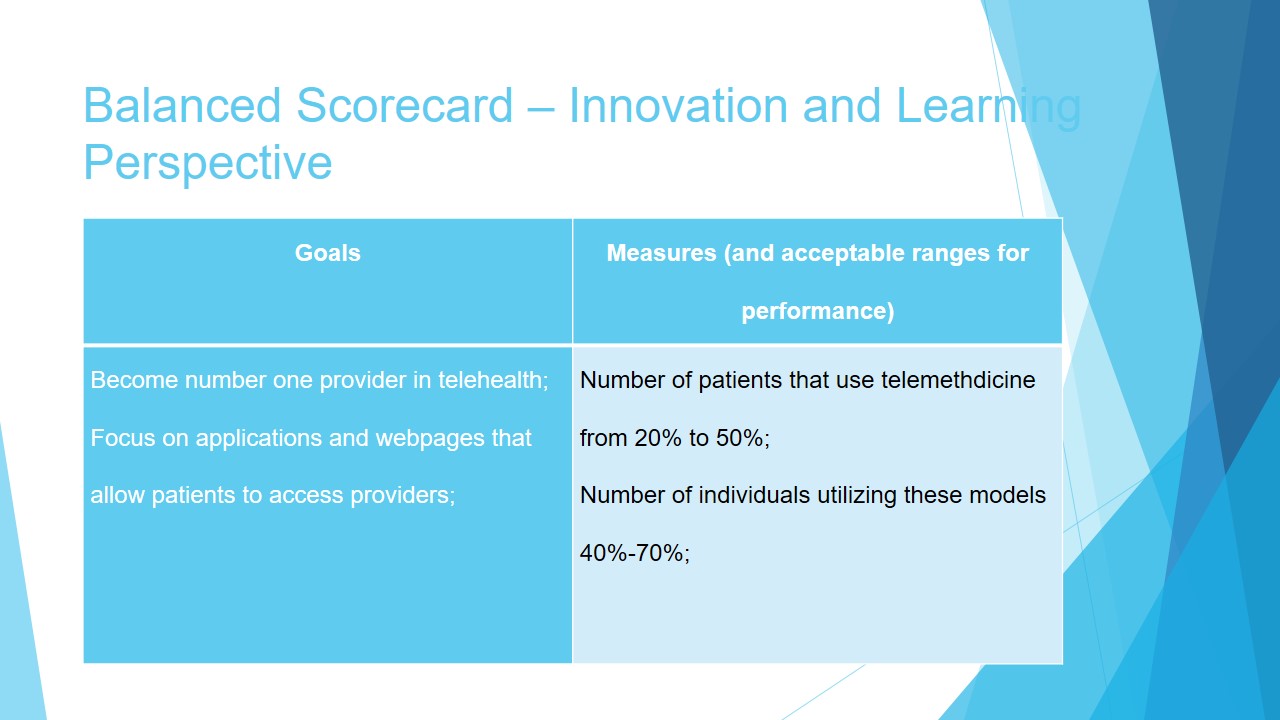
Balanced Scorecard – Internal Business Perspective
- Goals:
- Manage internal information technology;
- Minimize risk connected to the loss of client data;
- Measures (and acceptable ranges for performance):
- Ensure that 80-90% of branches have insurance covering data breaches;
- Provide additional education to 60-70% of the personnel.
Internal processes perspective is designed to determine the strategies that the company applies to manage its operations. Kaplan and Norton (1992) state that this element is connected with the customer experience because the approach that an organization employs to build its internal processes directly affects the services that clients receive from it. The main component that affects this is the cycle time, quality of care services, professional knowledge of the personnel, and overall efficiency of work. Anthem states that its mission and business strategy is connected to delivering efficient services to communities and applying innovation which will allow the company to obtain profits (“Mission, vision and values,” n.d.). Therefore, technology and its application is an essential component of this scorecard measure.
Critical technology that Anthem requires to operate is also part of this balanced scorecard component. This includes information systems that process reimbursement claims and new developments, which are used to simplify patient-provides cooperation. The financial risk that is connected to the internal processes is reflected in the amount of investment that the company makes in developing the technology. Additionally, cybersecurity is a major concern for Anthem because the organization spent approximately $230 million on mitigating the outcomes of the data breach that happened in 2015 (McGee, 2017). This included payouts to customers who filed lawsuits against this company and investments that Anthem made to improve its information technology.
The scorecard goals described above are connected to the company’s mission and strategy because this organization aims to create value for all the stakeholders involved in the operations. By improving its internal processes, the company will be able to achieve that goal. The acceptable ranges for measures and performance indicators, in this case, are connected to the information security assumptions.
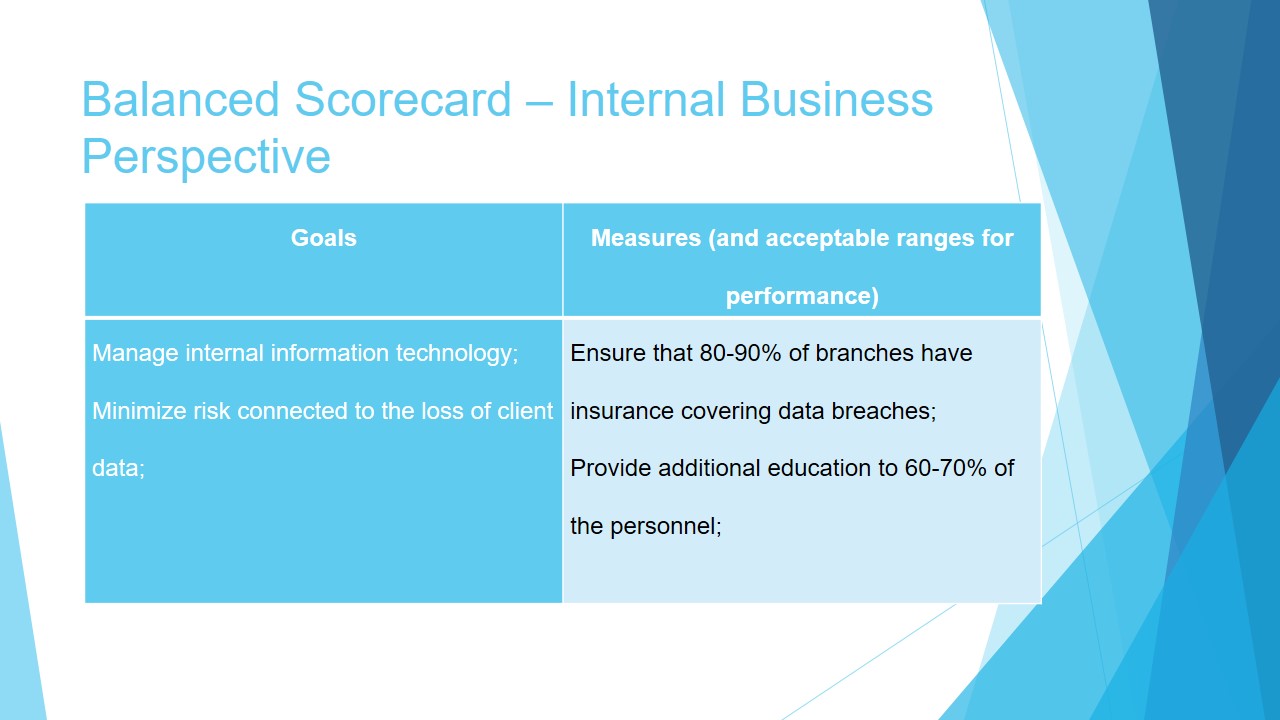
Recommendation 1 – Financial
- Appropriate management of the supply chain;
- Cost per patient measurement;
- Control of readmission rates;
- Standardized processes to reduce costs.
The first objective that arises from Anthem’s balanced scorecard is the need to improve revenue. According to Kwon, Kim, and Martin (2016), this can be done by assessing the supply chain management indicators and creating strategies that can help improve quality and reduce costs. The authors argue that it is necessary to dedicate additional attention to the cost per patient and readmission rates, as those are likely to affect Anthem’s reimbursements. Kwon et al. (2016) suggest applying “supply chain community surplus.” (p. 422). The supply chain can be managed through better cooperation with the insurer’s partners – hospitals and medical centers. This will allow Anthem to account for financial measurements such per patient better and tailor its strategies in regards to the results. In this regards, capital investment application should be the main focus, because according to Kwon et al. (2016) most healthcare organizations fail to have appropriate strategies for metrics such as warehouse utilization.
The issue of most healthcare organizations in the US is the inability to manage costs efficiently. The industry can save approximately $1.2 trillion if standardized approaches were implemented (Kwon et al., 2016). Moreover, this will help not only improve financial performance but also enhance the quality of services. However, it is also necessary to consider innovation as part of Anthem’s economic strategy because the company cites it as part of the vision and mission. Development of innovational methods to care provision is a high-risk investment for Anthem. However, the challenging external environment and consumer preferences demand such actions.

Recommendation 2 – Customer
- Improve cooperation with partner organizations to provide better healthcare services;
- Evaluate communication with clients.
Based on the balanced scorecard evaluation it can be argued that Anthem dedicates a lot of attention to improving the experience of clients that use its insurance plans. Batalden et al. (2015) claim that “unlike goods, services are always coproduced,” which provides difficulties with the improvement of the customer perspective of the balanced scorecard. Therefore, Anthem should consider developing programs that would enable better cooperation and coordination with partners. The strategy can target existing reimbursement practices or overall collaboration regarding patient health assessment.
Additionally, patient-physician cooperation is crucial because it determines the outcomes of the chosen treatment. Batalden et al. (2015) state that treatment process is successful when “the clinician and patient communicate effectively, develop a shared understanding of the problem and generate a mutually acceptable evaluation and management plan” (p. 509). Therefore, in order to improve the value of services from the customer perspective Anthem should evaluate its current strategies of communication and review the approaches that its providers use when diagnosing individuals.
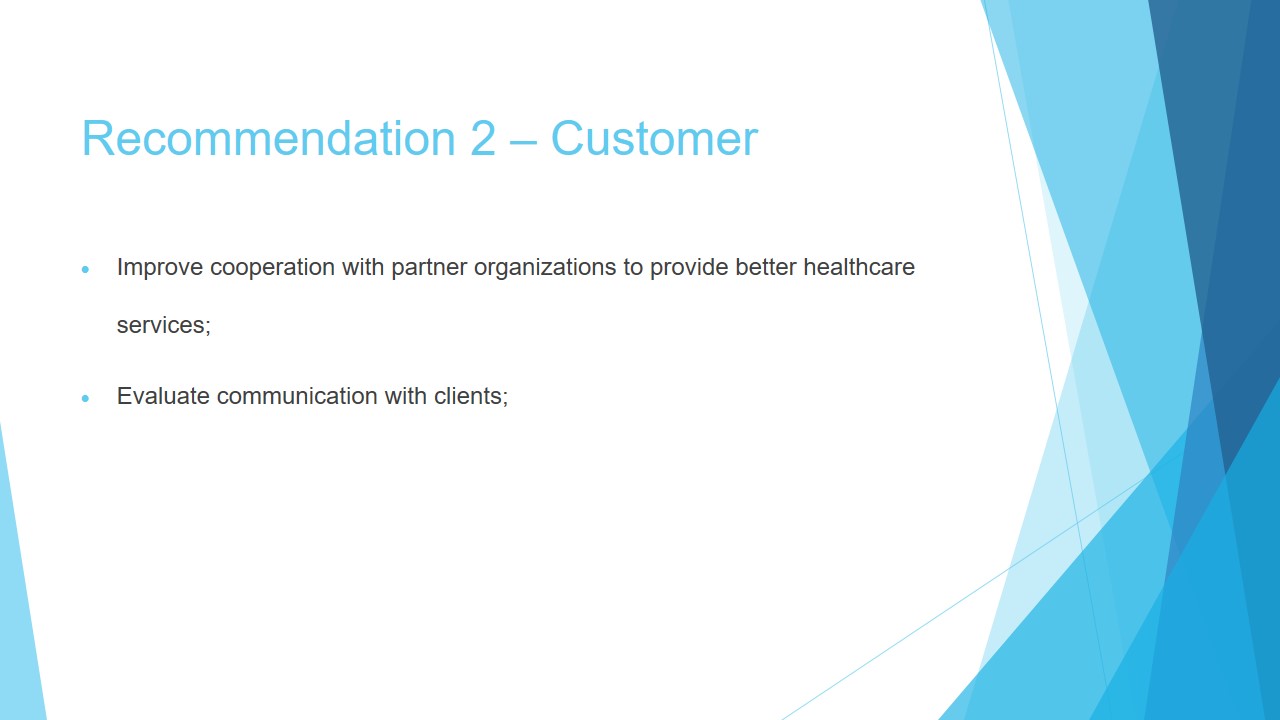
Recommendation 3 – Innovation and Learning
- Value enhancing telehealth;
- Additional quality control for digital tools;
- Provider education connected to managing telemedicine patients.
One issue that Anthem should pay extra attention to creating applications, websites, and artificial intelligence algorithms that would simplify the healthcare service provision is the quality of the care. Thus, the primary risk, in this case, is that patients will be unable to obtain a quality diagnostics process due to limitations of the remote consultations. This aspect can lead to issues with medical negligence and significant financial losses. Koumpouros (2013) argues that this perspective’s primary goal is to enable consistent improvement in the long-term outlook. This requires specific practices and processes within Anthem that would allow for proper outcomes of treatments through its innovational approaches. Quality assurance systems and additional education for a medical professional that will inform them about the common risks and misdiagnosis dangers connected to application usage can be helpful in this case.
According to Halpren-Ruder et al. (2018), “forty-six percent of consumers are now considered active digital health adopters,” which provides a strong incentive for healthcare providers to adopt this strategy. However, the authors argue that there are serious quality concerns connected to this approach. It is due to evidence that suggests “less diagnostic testing and overuse of antibiotics compared with physician office visits” (Halpren-Ruder et al., 2018). Thus, it is recommended that Anthem develops quality assurance system and personnel training programs that would target telemedicine. Through this approach, the company will ensure that it not only simplifies access to care through innovation, which is part of its vision but also provides value to consumers and avoids risks connected to incorrect diagnosis.

Recommendation 4 – Internal Business Processes
- Improved information technology safety measures;
- Enhance the understanding of data and information technology of the employees;
- Use big data when designing new services.
One primary aspect that requires additional attention from Anthem is its information technology management and safety of the data that this organization collects from its providers and patients. It is due to the data breach that occurred in 2015 where a hacker obtained personal information about 78.8 million of the company’s clients. Similar occurrences possess a severe risk for the organization because it affects that trust and reliability as well as leads to possible lawsuits and financial losses. Thus, Anthem cannot provide clients with high-quality care without consideration for data safety.
The issue is especially evident considering that fact that Anthem is focusing its attention on digital health care services, which provides a risk of additional data breaches. Moreover McGee (2017) states that the occurrences happened because the personnel opened emails that contained malware. Thus, the strategy should include additional training for employees to ensure that they can manage information systems and applications that Anthem uses in its work. Wang, Kung, and Byrd (2016) state that “the health care industry has not fully grasped the potential benefits to be gained from big data analytics” (p. 3). More specifically, it is anticipated that companies in the industry will use big data and its analysis to tailor their services, which will enable better value through the application of patient-centered care (Wang et al., 2016). Thus, additional attention to this component as part of the internal operations is a necessity.
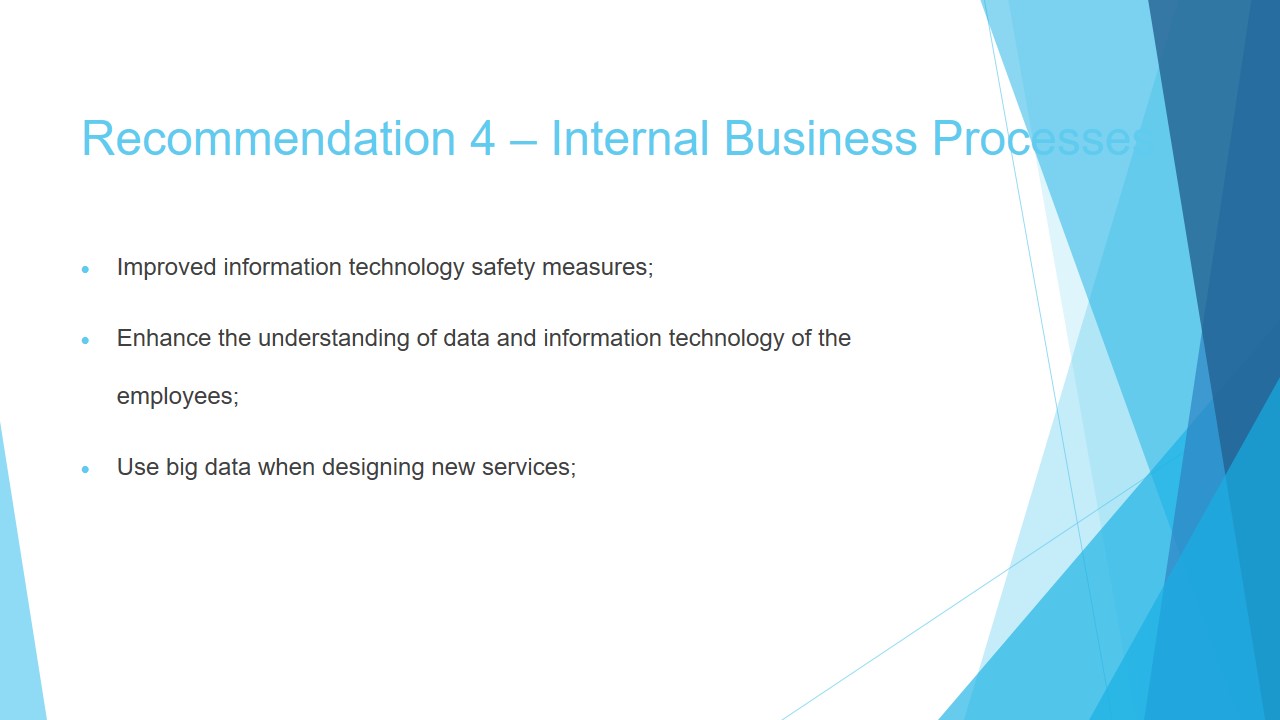
Conclusion
- Financial Perspective:
- Financial performance assessment of Anthem indicates that the company is profitable;
- Managing supply chain can help Anthem improve its costs and margins;
- Customer Perspective:
- Currently, the company provides services to 74 million Americans;
- Customer perspective can be enhanced by reviewing cooperation practices;
- Internal Processes Perspective:
- Technology is the crucial component of the internal process management for Anthem;
- Internal processes perspective can be improved by dedicating additional attention to information security and employee training;
- Training and Innovation Perspective:
- Currently, Anthem devotes a lot of attention to developing new models of patient-physician communication;
- Quality assurance and additional education can help mitigate risks of misdiagnosing telehealth patients.
Overall, the review of Anthem’s performance through the balanced scorecard allowed enhancing the understanding of this company’s current performance. In general, this tool is designed to help executives, and stakeholders review the most critical components of operations through four perspectives – financial, customer, innovation and training, and internal processes. The review of Anthem’s operations provided an understanding of the existing vision and strategy, which focus on simplifying care and using technology to improve revenue. Anthem’s vision and strategy connect to the four elements of the scorecard because each emphasizes the need to provide value-based care and apply innovation to improve access to health care services.
The main recommendation includes improving supply management techniques that this organization uses because the literature suggests that this component is often overlooked by healthcare establishments. Additionally, the company should improve cooperation practices with partners and patients and enhance information technology safety. Finally, Anthem should ensure that it provides sufficient quality of services to the clients using telemedicine or applications through specifically designed systems.
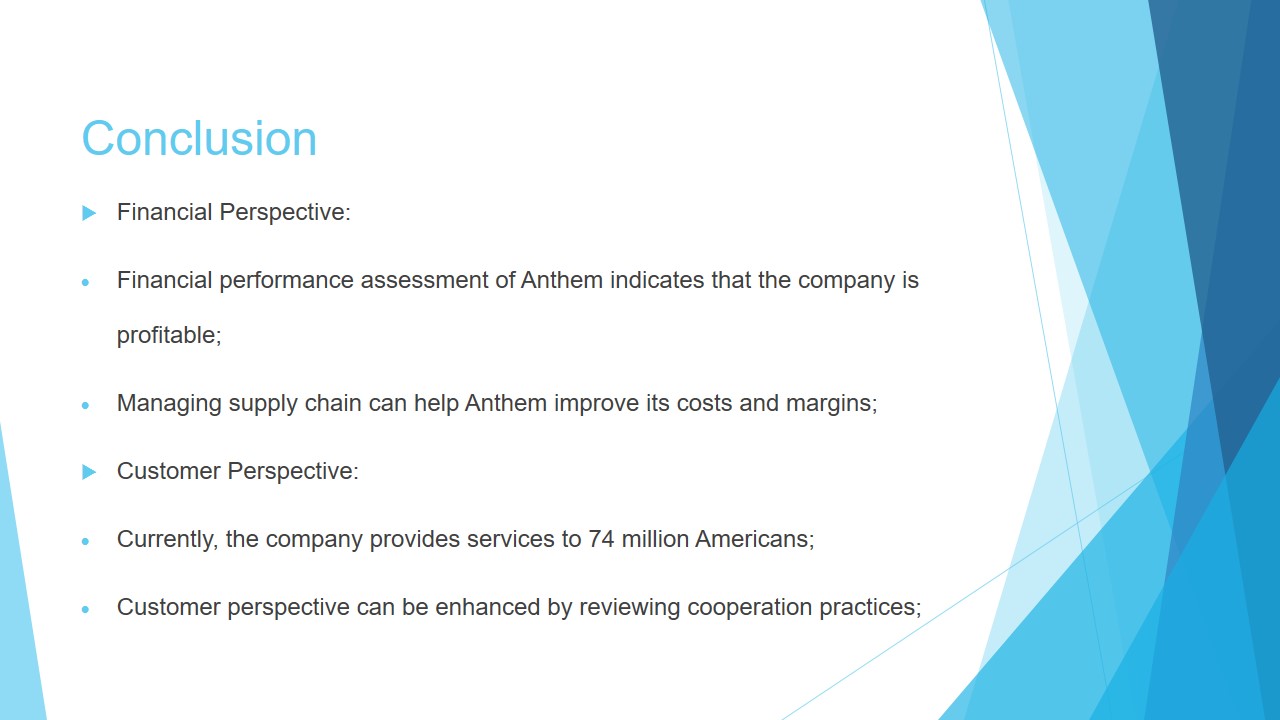
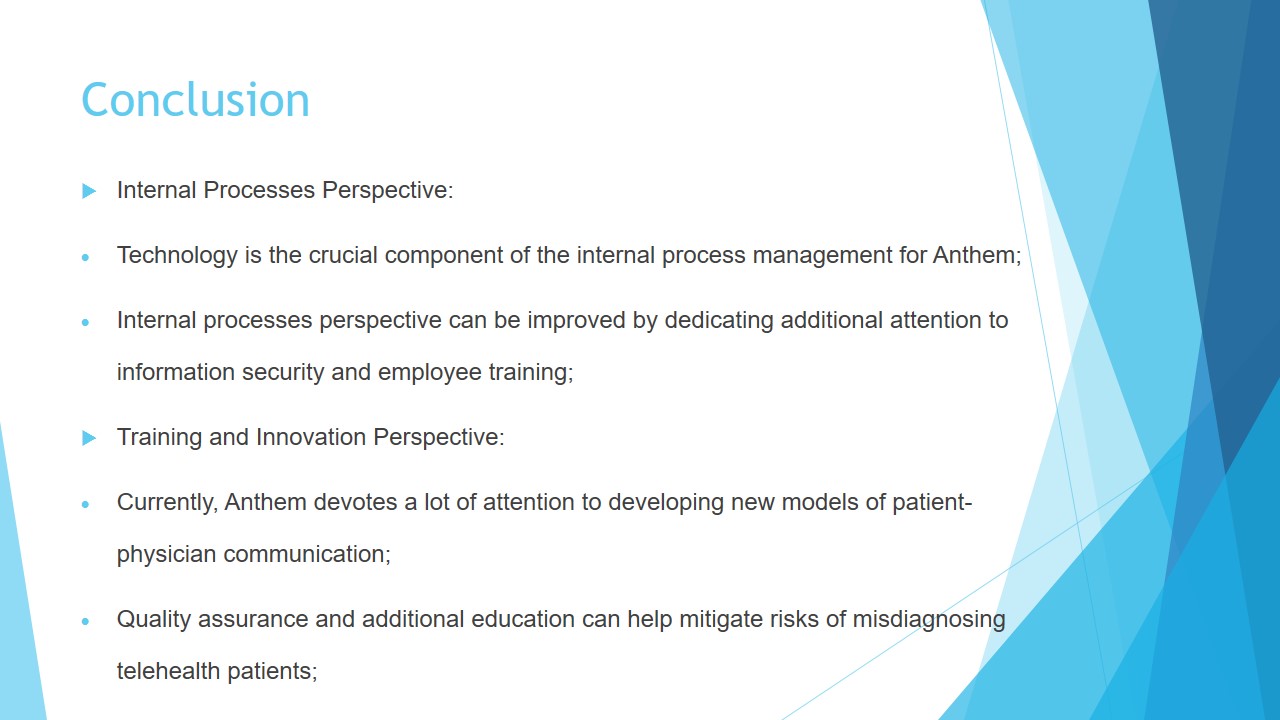
References
Anthem reports fourth quarter and full year 2018 results reflecting strong core performance. (n.d.). Web.
Anthem 2017 annual report. (2017). Web.
Batalden, M., Batalden, P., Margolis, P., Seid, M., Armstrong, G., Opipari-Arrigan, L., & Hartung, H. (2015). Coproduction of healthcare service. BMJ Quality & Safety, 25(7), 509-517. Web.
Business strategy. (n.d.). Web.
Corporate fact sheet. (n.d.). Web.
Halpren-Ruder, D., Chang, A. M., Hollander, J. E., & Shah, A. (2018). Quality assurance in telehealth: Adherence to evidence-based indicators. Telemedicine and E-Health. Web.
Innovations at Anthem Inc. (n.d.). Web.
Kaplan, R. S. & Norton, D. P. (1992). The balanced scorecard: Measures that drive performance. Harvard Business Review, 70(1), 71-79.
Kaplan, R. S. & Norton, D. P. (1996). Linking the balanced scorecard to strategy. California Management Review,39(1), 53-79.
Koumpouros, Y. (2013). Balanced scorecard: Application in the general panarcadian hospital of Tripolis, Greece. International Journal of Health Care Quality Assurance, 26(4), 286-307. Web.
Kwon, I., Kim, S., & Martin, D. (2016). Healthcare supply chain management; Strategic areas for quality and financial improvement. Technological Forecasting and Social Change, 113, 422-428. Web.
McGee, M. K. (2017). A new in-depth analysis of Anthem breach. Web.
Mission, vision and values. (n.d.). Web.
Wang, Y., Kung, L., & Byrd, T. (2018). Big data analytics: Understanding its capabilities and potential benefits for healthcare organizations. Technological Forecasting and Social Change, 126, 3-13. Web.